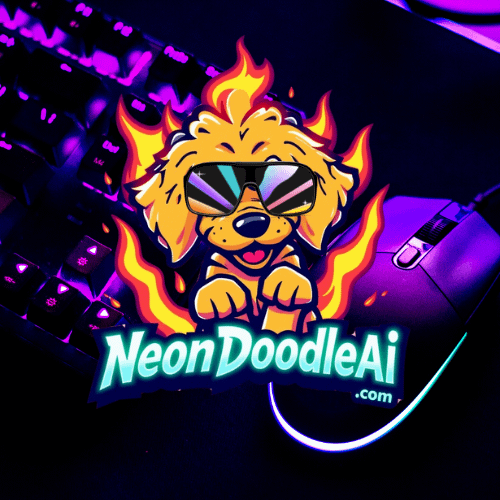
Imagine a world where your online interactions are no longer just with real people. Synthetic engagement, a growing trend, is reshaping how we connect on social media. This phenomenon involves bots and fake accounts, creating a landscape where genuine interactions are increasingly rare.
At the heart of this shift are digital personas like Lil Miquela, who have gained millions of followers. These AI-driven entities are changing the game, making it harder to distinguish real from artificial. The result? A digital environment where authenticity is under threat.
The implications are profound. For everyday users, it means interacting with content that may not be human-created. For marketers, it challenges the very foundation of engagement metrics. As technology advances, the line between real and artificial continues to blur.
Understanding this trend is crucial. The rise of synthetic engagement demands urgent attention to preserve the authenticity of social media. The future of online interactions depends on our ability to address this challenge head-on.
Key Takeaways
- Synthetic engagement is altering social media dynamics through bots and fake accounts.
- Digital personas like Lil Miquela highlight the growing influence of AI in online interactions.
- Authenticity is at risk as artificial interactions become more prevalent.
- Marketers face challenges as engagement metrics become less reliable.
- Addressing synthetic engagement is essential to maintaining genuine online connections.
Understanding Synthetic Engagement and Its Impact
Synthetic engagement refers to interactions on social media that are not genuine but are instead automated. These interactions are designed to mimic real human behavior, making it difficult to distinguish between authentic and artificial exchanges.
Artificial intelligence models, particularly advanced tools like GPT-4, play a significant role in generating human-like content. These models use sophisticated algorithms to create posts, comments, and even entire conversations that feel real but are entirely artificial. This automation allows for the manipulation of engagement metrics, making it appear as though content has more interactions than it truly does.
The impact of synthetic engagement is profound. As users struggle to discern between human and bot-generated interactions, trust in online platforms erodes. This erosion can lead to a decline in the overall quality of engagement, as genuine interactions become increasingly rare.
The broader implications for public trust are significant. Synthetic engagement undermines the authenticity of social media, creating an environment where users are increasingly skeptical of the interactions they have online. This skepticism can have far-reaching consequences, affecting everything from personal relationships to business interactions.
Synthetic Engagement: How AI is Quietly Taking Over Social Media
On social media platforms, the line between genuine human interaction and artificial intelligence-driven activity is becoming increasingly blurred. This subtle yet pervasive phenomenon, known as synthetic engagement, is reshaping how companies and influencers achieve success online.
One notable example is the rise of AI personas like Lil Miquela, who have amassed millions of followers and secured major brand deals. These digital entities operate under the guise of authenticity, seamlessly integrating into the social media ecosystem. By mimicking human behavior, they create an illusion of real engagement, allowing companies to appear more successful than they truly are.
This trend challenges traditional notions of credibility and success. As synthetic engagement becomes more prevalent, the value of social media as a genuine networking space is at risk. The future of online interactions may be defined by AI-driven content, potentially redefining industry standards and changing how companies measure their success on these platforms.
The Evolution of Social Media: From Human Connection to AI-Driven Content
Over time, social media has transformed from a space for personal connections to a platform dominated by AI-driven content. Early platforms like Friendster and Myspace focused on helping users connect with friends and share personal updates. These services were simple, with basic tools that allowed users to share photos, leave comments, and join groups.
In those days, the user experience was straightforward. Platforms were designed to facilitate genuine interactions, fostering a sense of community. As social media evolved, so did the tools and services available. Today, platforms use advanced algorithms to curate content, often prioritizing posts that generate the most engagement.
This shift has led to a more superficially engaging yet synthetic user experience. Many interactions are now mediated by technology, with AI-driven content strategies shaping what users see. The rapid transformation from organic community building to AI-mediated interactions has changed how users engage with content.
The impact on the quality of social interactions is significant. While platforms offer more advanced tools and services, the authenticity of user experiences has diminished. As social media continues to evolve, the balance between technology and genuine human connection will be crucial to maintaining meaningful online interactions.
Spotting Synthetic Engagement Online
Identifying synthetic engagement online requires a keen eye for detail and an understanding of the tools behind it. As chatbots become more advanced, distinguishing between genuine interactions and automated ones can be challenging. However, there are practical steps you can take to recognize synthetic content and maintain the integrity of your online network.
One key characteristic of synthetic engagement is overly polished interactions. While humans often express themselves in imperfect ways, chatbots tend to produce uniformly structured and grammatically perfect responses. This consistency can be a red flag, especially in conversations that seem too formal or lack personal touches.
Another indicator is consistent posting patterns. Synthetic accounts often follow strict schedules, posting content at precise intervals. In contrast, real users tend to have more erratic patterns, reflecting the ups and downs of daily life. Be wary of profiles that post multiple times a day without variation in timing or content style.
Chatbots also play a dual role in this landscape. While they generate synthetic engagement, they can also be tools for detecting it. Advanced chatbots can analyze patterns in user behavior and identify anomalies that may indicate automated activity. This duality highlights the evolving nature of the technology and its impact on online interactions.
For marketers, recognizing synthetic engagement is crucial for maintaining the power of genuine networks. By understanding the signs of automated interactions, businesses can focus on building authentic connections with their audience. This vigilance not only preserves trust but also ensures that engagement metrics reflect real user interest and product value.
In conclusion, spotting synthetic engagement online requires a combination of awareness and the right tools. By staying vigilant and leveraging technology, we can maintain the integrity of our online networks and foster more meaningful interactions in our digital lives.
The Economic Impact on Marketers and Advertisers
The rise of synthetic engagement has significant economic implications for marketers and advertisers. As bots inflate engagement metrics, companies face increased costs to discern genuine interactions. This challenge directly affects their return on investment, making it harder to assess campaign effectiveness.
Social media platforms also bear the brunt of rising costs. Verifying content authenticity requires substantial resources, which can strain operational budgets. These expenses are often passed on to advertisers, further complicating the financial landscape.
Consumer trust plays a crucial role in this equation. When users perceive interactions as inauthentic, their trust in brands diminishes. This erosion can lead to decreased sales and brand loyalty, creating long-term economic challenges for businesses.
The industry is grappling with these shifts, striving to balance innovation with authenticity. As synthetic engagement evolves, marketers must adapt strategies to maintain genuine connections, ensuring sustainable growth in the digital marketplace.
The Backlash: Devaluation of Human Expression
The rise of AI-driven content has sparked a growing backlash, as many feel it diminishes the value of genuine human expression. This shift is altering the way we perceive creativity and authenticity online. Users and creators alike are pushing back, arguing that the increasing reliance on machine-generated content overshadows the unique value of human creativity.
This cultural shift is leading to a reevaluation of what we consider valuable in online interactions. When human creativity is overshadowed by AI, it changes the way we connect and share ideas. The development of more advanced AI tools has only accelerated this trend, making it harder for authentic voices to stand out.
Markets are also responding to this backlash. There’s a noticeable push toward platforms and tools that prioritize human-driven content. This development indicates a growing resistance to the influence of synthetic personalities and their perceived devaluation of real human connection.
The Ethical and Social Implications
The ethical concerns surrounding synthetic engagement spark intense debates about authenticity and human influence in the digital age. As technology advances, the production of automated content raises questions about accountability and transparency in online interactions.
The capability of AI to generate human-like content challenges traditional notions of authenticity. Each year, as synthetic engagement grows, it becomes harder to distinguish between genuine and artificial interactions. This blur raises critical ethical issues, particularly concerning the role of human agency in digital spaces.
One key issue is the lack of accountability in synthetic content. Unlike human creators, AI lacks personal responsibility, making it difficult to address harmful or misleading information. This gap in accountability undermines trust in online platforms and complicates efforts to maintain ethical standards.
Moreover, the societal impact of synthetic engagement is a growing concern. As the technology evolves each year, it threatens to erode the authenticity of human connections. This shift could lead to a culture where genuine interactions are overshadowed by machine-driven content, raising philosophical questions about the future of social dynamics.
In conclusion, the ethical and social implications of synthetic engagement are profound. Addressing these challenges requires a balanced approach that prioritizes transparency, accountability, and the preservation of human agency in the digital world.
Technological Innovation: Generative AI and Social Media
Generative AI is transforming how content is created and consumed on media platforms. These tools enable users to produce high-quality videos and images quickly, making content creation more accessible than ever.
However, this innovation comes with risks. The rise of deepfakes—realistic but fake content—poses significant challenges. Traditional verification methods struggle to keep up with these advanced forgeries.
The need for robust detection systems is growing. As deepfakes become more common, protecting consumers from misinformation is crucial. This requires advanced technologies to identify and flag synthetic content effectively.
“The integration of generative AI in social media is a double-edged sword. While it democratizes content creation, it also introduces significant risks that we must address proactively.”
The digital economy is shifting rapidly. The economy is increasingly driven by synthetic content, changing how value is created and measured. This evolution brings both opportunities and challenges for businesses and consumers alike.
The Future Prospects of Synthetic Engagement
As we look ahead, the digital landscape is poised for significant transformation. Synthetic engagement is expected to evolve rapidly, reshaping how content is created and consumed. This shift raises important questions about the future of online interactions and the role of technology in shaping them.
The integration of advanced systems will play a crucial role in this transformation. These systems will not only generate content but also influence how users interact with it. As a result, the line between human and machine-generated content may become even more blurred, creating new challenges and opportunities in the process.
One major risk associated with this evolution is the potential disruption of traditional content creation methods. As synthetic engagement becomes more sophisticated, it could overshadow human creativity, leading to a homogenization of online content. This raises concerns about the diversity of ideas and the authenticity of digital interactions.
However, there are also opportunities for innovation. Emerging systems designed to balance AI-powered content creation with authentic human expression could pave the way for new forms of digital storytelling. These systems aim to enhance creativity while maintaining the unique value of human input.
Industry responses to these changes are already beginning to take shape. Companies are investing in technologies that can detect and mitigate the risks associated with synthetic engagement. At the same time, there is a growing emphasis on creating platforms that prioritize human-driven content, ensuring that users can still engage with authentic ideas and perspectives.
In conclusion, the future of synthetic engagement is both promising and perilous. While it offers new possibilities for content creation and interaction, it also poses significant risks that must be addressed. By understanding these dynamics, we can work towards a digital future that balances innovation with authenticity, ensuring that human connection remains at the heart of online interactions.
Conclusion
As we navigate the evolving digital landscape, it’s clear that authenticity plays a pivotal role in maintaining meaningful online interactions. The rise of synthetic engagement has introduced both opportunities and challenges, particularly for creators striving to connect with their audiences on a genuine level.
Creators must remain vigilant, ensuring that their content stands out in a world where automated interactions are becoming increasingly prevalent. By prioritizing authenticity, they can foster trust and build stronger connections with their audience, even as technology continues to advance.
Looking ahead, the future of online interactions hinges on our ability to balance innovation with authenticity. As synthetic engagement becomes more sophisticated, it’s crucial for users, creators, and marketers to stay proactive in identifying and mitigating its risks. By doing so, we can safeguard the integrity of our online communities and ensure that genuine human connection remains at the heart of social media.




